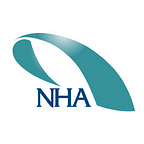Seattle City Light Successfully Educates Community About Wildfire Mitigation Best Practices
Most people don’t expect the wet climate of western Washington climate to be susceptible to wildfires. After conducting research, Seattle City Light started to understand that it may be at a higher risk for wildfire than initially expected. As a result, the utility began joining community groups and educating its employees, stakeholders and neighbors about mitigating the risk.
In 2017, Seattle City Light wrapped up its employee- and resident-driven evacuation procedure for the utility-owned town of Diablo. The evacuation procedure is just the most recent move to educate employees and community members about the risk of wildfire in western Washington.
The plan began in 2012, when Seattle City Light created the five-year plan for wildfire mitigation to protect its Skagit River Hydroelectric Project and the utility-owned towns of Newhalem and Diablo in Washington, which are home to many employee residences and historical buildings.
To start, Seattle City Light knew it had to partner with other community members. It was the first utility and one of the first members from western Washington to join the Washington Fire Adapted Communities Learning Network (WAFAC), which connects communities to discuss wildfire best practices and concerns. It also partnered with neighboring landowners, the North Cascades National Park and the U.S. Forest Service, recognizing the need to have all community members on board for an effective plan.
However, getting the support of all employees and community members was no easy task.
“At the time, I actually wasn’t sold on the idea because our culture in western Washington is that we don’t have wildfires; that only happens in eastern Washington, which is a drier, more fire-prone climate. But it’s rainforest on the western side,” says Cody Watson, Fire Brigade Chief for Seattle City Light and Member of the Newhalem-Diablo Fire Brigade. “I did more research and found that it’s not as likely, but they do happen and the consequences to our facilities and infrastructure could be very detrimental. I made the argument that creating a plan is not much work and the benefits would be great.”
Around the same time, the utility hired Dr. Crystal Raymond as a Climate Change Resilient Advisor, who was highly educated in fire ecology and understood the danger. Raymond and Watson began coming up with a wildfire preparedness plan.
The utility participated in a Climate Change Vulnerability Assessment and Adaptation Plan, which identified the risk of wildfire as a priority. At employee safety meetings, they would share updates and advice for wildfire management, sometimes bringing in partners from the Skagit
County Conservation District and National Park Service to share their experiences working with wildfires. Employees were encouraged to share those updates and best practices in their local communities.
It wasn’t long before employees and community members began to understand the risks and supported creating a plan.
Seattle City Light trained its vegetation management and gardening crews on principles from the Firewise USA™ program to employ fuel reduction efforts around critical and historical buildings. They also planted fire-resistant native species in flower beds and gardens and reduced invasive species near transmission lines to help control potential wildfires.
Their work paid off. Seattle City Light avoided any injuries or loss of critical buildings when a lightning strike ignited a wildfire that threatened Newhalem and transmission lines in 2015. The fire escalated quickly and it wasn’t long before it crossed the firefighters’ protective fireline and came within 100 feet of the utility’s powerhouses.
“Where it burned to was where we started the Firewise USA™ program,” Watson says. “Because we took care of the vegetation — which acts as fuel — during first our Firewise USA™ project, it saved the buildings from catching fire.”
Diablo was evacuated, transmission was down for 10 days and 7,000 acres were burned by fire, but no one was injured, no historic or critical utility-owned buildings were damaged and transmission was restored quickly.
“One of the great things WAFAC does is encourage you to talk to neighboring agencies,” says Watson. “One of the most critical things that led to success during the 2015 wildfire was face-to-face time with park service and fire response agencies.”
Seattle City Light’s efforts were honored by the National Hydropower Association, which awarded it with a 2018 Outstanding Stewards of America’s Waters Public Education Award.
“Seattle City Light went above and beyond to educate its employees and surrounding communities about the threat of wildfires” said Linda Church Ciocci, NHA Executive Director.”
